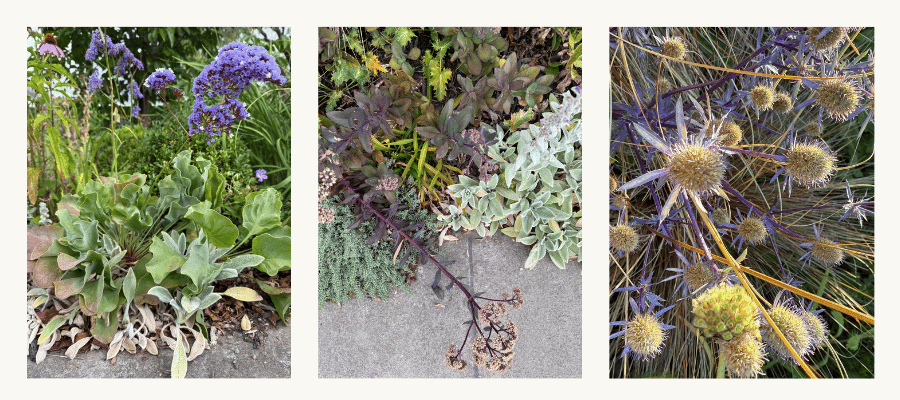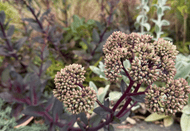Posted by Kelly Jean Reyland
13th Feb 2025
Drought Tolerant Plants

There are many benefits to being strategic when choosing plants. The right plant for the right place is key to a successful garden but you can go even further in strategic selection.
There are plenty of plants that will grow in a full sun position but many of these plants also need regular moisture to thrive. If you live in an area that is hot in summer or that regularly has water restrictions over the summer months, you can find yourself watering plants daily or watching as plants suffer and decline because you can’t water them due to council restrictions. Plants in pots are particularly prone to drying out as there is a limited soil volume and increased surface area. Pots give us a large degree of flexibility, which is great, but they will usually always need some extra attention.
If you have the choice to plant in the garden or in a pot and you want to have less input or maintenance going forward - always plant in the garden.
It is also important to consider responsible water use. In Auckland, water use is already paid for by residents and many councils around the country are preparing to roll this out so we need to be using the water sustainably as we will be paying for it out of our back pockets soon if we aren’t already.
There are plants that not only thrive in full sun, but they are drought tolerant as well. These plants are a wise choice to consider when it comes to lowering water use and daily input.
Succulents are always the plants that people refer to as drought tolerant and they are for good reason. They store water up in their fleshy leaves and can go for weeks or months without watering. They come in a wonderful range of colours, textures, shapes and sizes and some of them have vibrant flowers as a bonus.
They also have the bonus of generally being reliable in quickly multiplying to fill in the space and they are super easy to propagate and create new plants from.
- Sedum
- Echeveria
- Aeonium
- Aloe
- Agave
- Portulaca
- Cacti
Look for plants that have silver leaves or furry leaves as they reflect the heat or catch moisture droplets amongst the hairs to make the most of any moisture.
- Convolvulus cneorum
- Brachyglottis greyii
- Artemisia
- Phlomis russeliana (Jerusalem sage)
- Stachys byzantina (Lambs ears)
- Pittosporum crassifolium (Karo)
- Lychnis (Rose campion)
- Cerastium (Snow in summer)
Plants that come from hot and dry places
Think the Mediterranean, South Africa, Australia - all places that are hot and dry climates. These plants are designed to thrive with little to no water.
- Lavender
- Sage
- Olive trees
- Bay tree
- Euphorbia
- Scaevola (Fan flower)
- Westringia (coastal rosemary)
- Dietes
- Grevillea
- Protea
- Leucadendron
- Leucospermum (pincushion flower)
New Zealand natives
Our native plants are adapted to live in the environments that naturally occur here. So, if we look for native plants that thrive in areas that are naturally dry, they can be used in our gardens in these conditions. Coastal plants are a great place to look for inspiration.
- Pachystegia insignis (Marlborough rock daisy)
- Coprosma
- Xeronema (Poor knights lily)
- If you have dry shade Arthropodium (renga renga lily) is invaluable!
The key to lessening the water needs for your garden is to gather plants together that have similar water needs. If you have your main garden beds planted in drought-tolerant shrubs, you only need to water them very occasionally - if at all. If you have lots of pots, selecting drought tolerant plants for most of them will drastically reduce how much watering you do.
You can have some plants that need water but be strategic in keeping them grouped together with other plants that have similar needs and keep them to a minimum.
In the garden, planting in autumn and winter will enable nature to water the plants regularly while they are getting established. After plants are established, they are much more resilient to periods of dry weather as their roots have had the opportunity to grow down deep and reach moisture that is available.
If you want to lessen the amount of water resource that you are using in your garden and lessen the amount of attention you need to give your plants on a daily basis, be strategic about the plants you choose and where you plant them.
Written for Gubba by Kelly Jean Reyland (www.gardenadvice.co.nz)


























